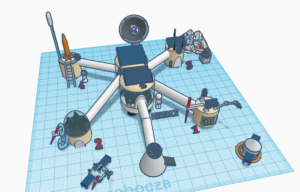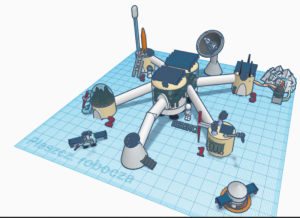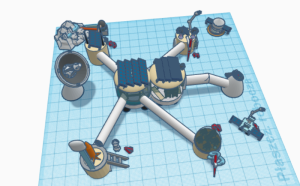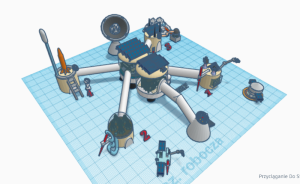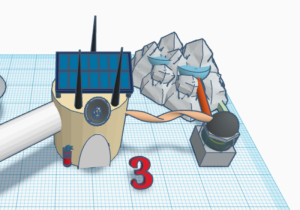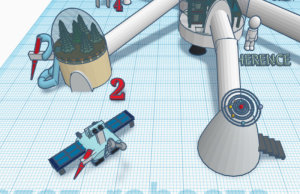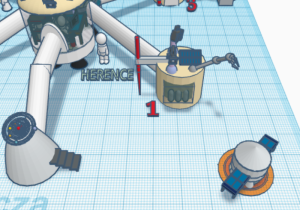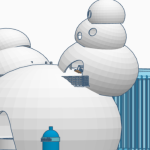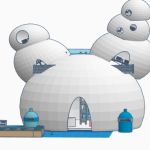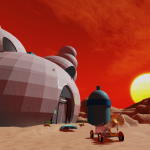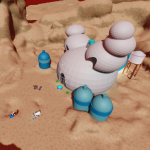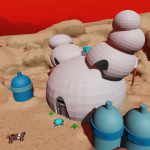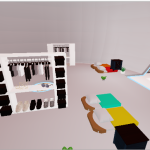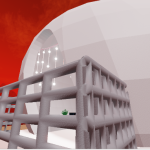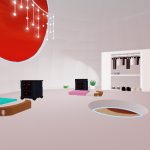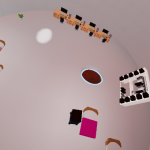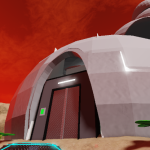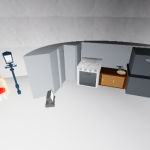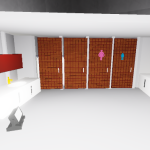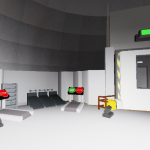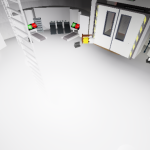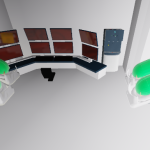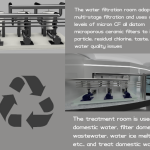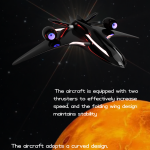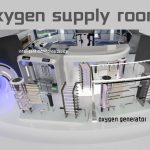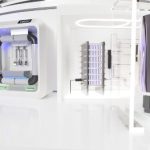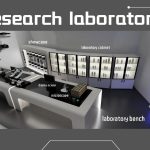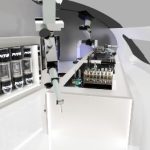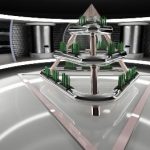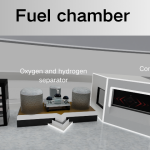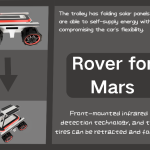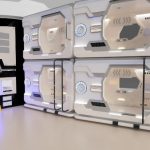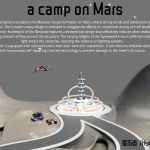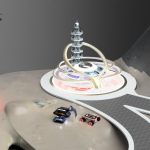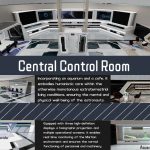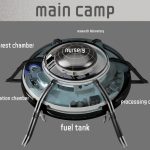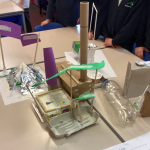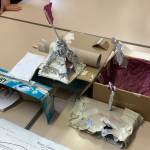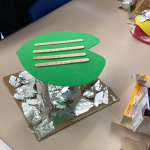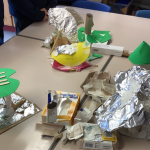HerEnce – mission to Enceladus by AstroMila
Primary School number 33 in Bielsko-Biała Bielsko-Biała-Silesia Poland 14 years old 1 / English Saturn’s moons
External link for Tinkercad 3D design
Project description
HerEnce is a space habitat project (along with additional rovers, landers, etc.) aimed at Saturn’s icy moon Enceladus. The name of the project comes from the beginnings of two words – ,,Her”, in honour of the discoverer of this celestial body – William Herschel, while the second part ,,Ence” comes from the beginning of the name of this moon. The main part of the habitat consists of two domes connected to each other, they are the living modules for the astronauts (mission coordination, food, sleeping, etc.) and in addition, an airlock comes out from them, so that there will be an opportunity to go outside. From the main part of the habitat there are 4 more modules, each marked with a number. Number one (1) is marked by the module for taking and analysing samples from under the surface, as well as the ground itself. Samples are taken by the rover which can be seen in front of the habitat or by a drill located in the module. Number two (2) denotes the botanical module, under whose dome several different plants are embedded and water to ensure their further development is supplied from the depths of Enceladus. Number three (3) is designated the communications/power module, which has one of the additional solar panels. Number four (4), on the other hand, is labelled the atmospheric module, which studies the known ice geysers, their composition and impact on the parent planet and its rings. The rocket that sits on the module is launched toward the geysers to fly through them, image and collect volatile samples of their composition (later delivered to the habitat by the rover). The rover itself, meanwhile, collects soil samples, explores Enceladus’ craters and valleys and takes images of its surface. Astronauts enter the habitat via crew capsules, and supplies for the station are delivered in an identical, shuttle-like fashion. Habitat gets its energy from two sources. The first, and most efficient, is solar energy – provided via numerous solar panels in various parts of the station. The second way of obtaining energy for the station is through a hydroelectric generator, which generates energy by means of water falling from the hills or from under the surface, in a manner analogous to what hydroelectric power plants on Earth do. Communication with the planet is provided by a large antenna located between modules 3 and 4.
#3D Design
Other Projects
Cryo Lab: Centro Criogénico en Marte



